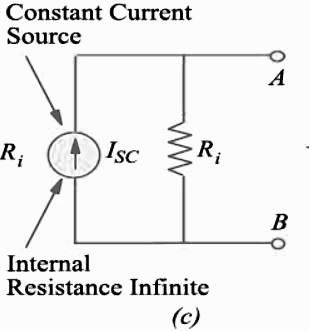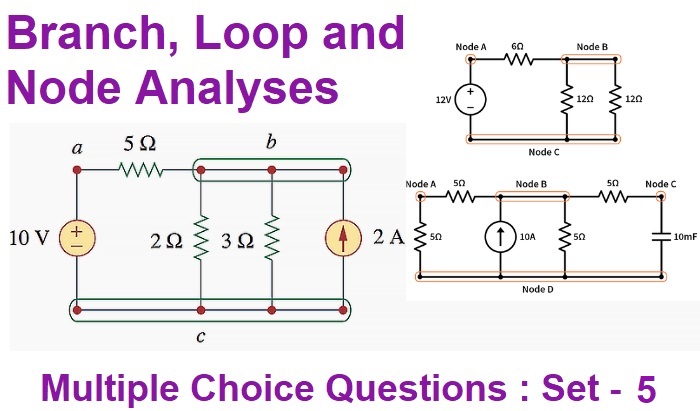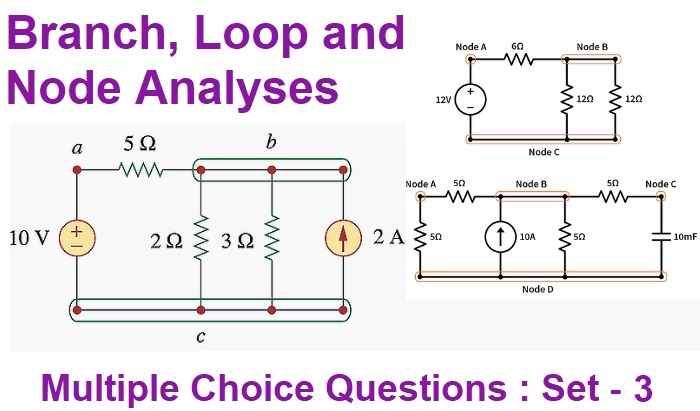Norton’s Theorem
Norton’s Theorem :
This theorem is an alternative to the Thevenin’s theorem. In fact, it is the dual of Thevenin’s theorem. Whereas Thevenin’s theorem reduces a two-terminal active network of linear resistances and generators to an equivalent constant-voltage source and series resistance, Norton’s theorem replaces the network by an equivalent constant-current source and a parallel resistance.
This theorem stats that :
(i) Any two-terminal active network containing voltage sources and resistance when viewed from its output terminals , is equivalent to a constant-current source and a parallel resistance. The constant current is equal to the current which would flow in a short-circuit placed across the terminals and parallel resistance is the resistance of the network when viewed from these open circuited terminals after all voltage and current sources have been removed and replaced by their internal resistances.
Explanation :
As seen from Figure (a) given below, a short is placed across the terminals A and B of the network with all its energy sources present. The short-circuit current ISC gives the value of constant-current source.

For finding Ri, all sources have been removed as shown in Figure (b). The resistance of the network when looked into from terminals A and B gives Ri.

The Norton’s equivalent circuit is shown in Figure (c). It consists of an ideal constant current source of infinite internal resistance (Article Ideal Constant-Current Source) having a resistance of Ri connected in parallel with it.
(ii) Another useful generalized form of this theorem is as follows :
The voltage between any two points in a network is equal to ISC. Ri where ISC is the short circuit current between the two points and Ri is the resistance of the network as viewed from these points with all voltage sources being replaced by their internal resistances (if any) and current sources replaced by open-circuits.

Suppose, it is required to find the voltage across resistance R3 and hence current through it, as shown in the figure (d).

If short-circuit is placed between A and B, then current in it due to battery of e.m.f. E1 is E1/R1 and due to the other battery is E2/R2.

where G1 and G2 are branch conductance.
Now, the internal resistance of the network as viewed from A and B simply consists of three resistances R1, R2 and R3 connected in parallel between A and B. Please note that here load resistance R3 has not been removed. In the first method given above, it has to be removed.



Current through R2 is I3 = VAB/R3.
How To Nortonize a Given Circuit ?
This procedure is based on the first statement of the theorem given above.
1. Remove the resistance (if any) across the two given terminals and put a short-circuit across them.
2. Compute the short-circuit current ISC.
3. Remove all voltage sources but retain their internal resistances, if any. Similarly, remove all current sources and replace them by open-circuits i.e. by infinite resistance.
4. Next, find the resistance R1 (also called RN) of the network as looked into from the given terminals. It is exactly the same as Rth (Article Ideal Constant-Current Source).
5. The current source (ISC) joined in parallel across Ri between the two terminals gives Norton’s equivalent circuit.
Read article – Units of Resistivity
Visit NCERTplanet.com for NCERT solutions and Textbook downloads



